Pentax Auto 110: “in which cam the camera?”
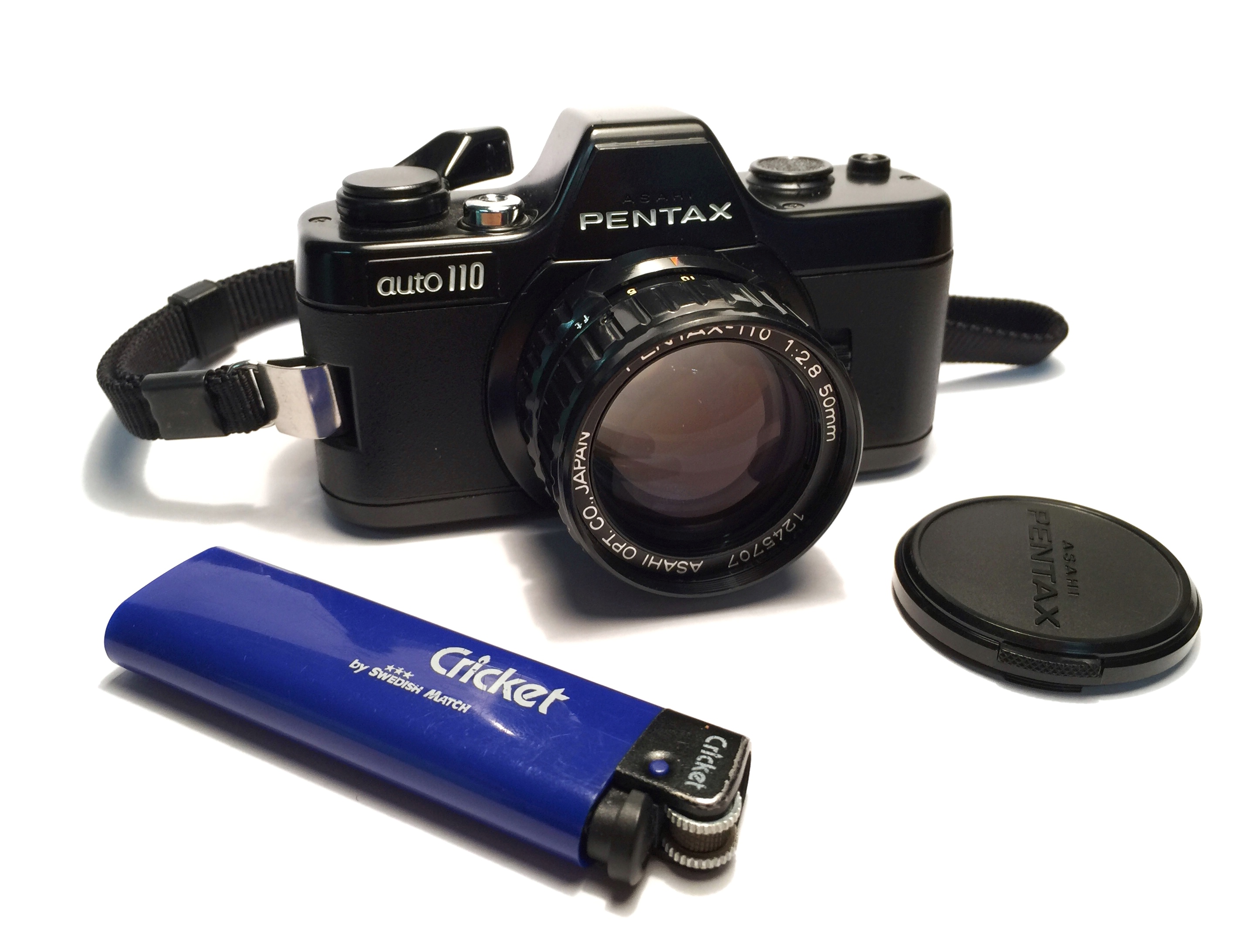
In 1981, an unusual commercial appeared on the western TV channels. Viewers saw men's hands, and a voiceover asked: “In which hand is the Pentax camera?” In this one, of course. ” The palm unfolded, and it turned out to be a small camera. The voiceover continued: “And in this one there are lenses” - and in the second palm that was opened, the viewer could see two tiny lenses. The video advertised the camera Pentax Auto 110.
In fact, the camera was introduced even earlier, in 1978, and immediately caused delight and surprise. In the 1970s and 1980s, the 110 mm format film was very popular. The main reason is the simplicity of working with it. The film was delivered in non-separable “two-canted” cassettes, which could be simply inserted into the camera and immediately removed, and at the end of the survey no rewind was required. Surprisingly, a huge number of users seemed incredibly difficult to load and rewind conventional 35 mm film, and the 110th began to confidently conquer the market. Many manufacturers of photographic equipment released without exaggeration hundreds of camera models for it. The main form factor was a flat "creep", and for a long time it never occurred to anyone to do something different.
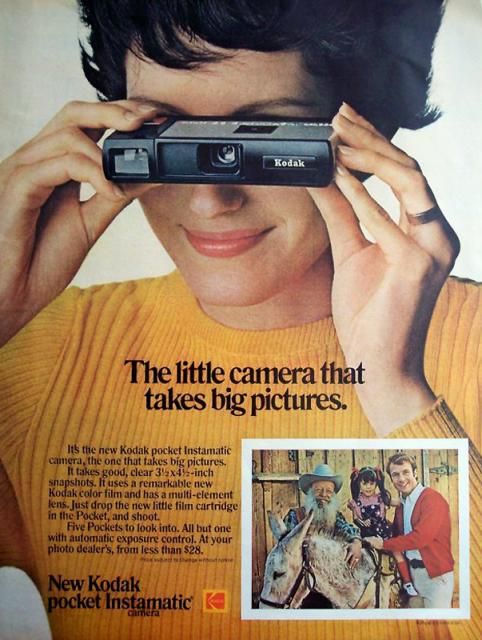
The simplicity of handling cassettes (even a child can handle it!) Led to the appearance of a huge number of children's cameras of this format - pink Barbie cameras, panda head cameras, airplanes and clowns, “spy” toy photo glasses and even phototransformers were produced.

It would seem that here it is - success, however, a stereotype quickly developed in the minds of consumers: “Format 110 is child's play”. It was necessary to change something, and Pentax released its own, one and only model. But what! It was a SLR camera with TTL metering and interchangeable lenses. And at the same time she was placed in a fist! Well, in a large male fist.

Asahi Pentax Auto 110 (as it was then called) cost an incredible $ 500, but was literally crammed with original and most modern technologies at the time:
- Fully automatic exposure with lens metering
- The mechanism of the diaphragm, built into the "body" of the camera
- Bright, clear and high-contrast LED viewfinder
- Park lenses, filters, lens and close-up lenses
- Complete flash
- External motor drive (!)
In short, it was a top-end SLR camera (as of 1978, of course), reduced by a factor of seven. It was delivered in the form of a chic set with all accessories.

Today, there is only one 110 film maker in the entire Universe observed by us - the company Lomography, and even that periodically disappears from radar. Enthusiasts are getting smaller, no one needs cameras, and as a result, the kit that you see in the photo above, I bought on eBay for today's thirty-odd dollars along with shipping.
Camera Specifications:
- Modes: P (fully automatic)
- TTL exposure meter
- Electronically controlled shutter 1/750 - 1 sec.
- Aperture range: f / 2.8 - f / 13.5
- Power supply: two 1.5V elements (LR44)
- The ability to connect an external motor drive with the possibility of serial shooting up to 1.5 c / sec.
- Sufficient / insufficient exposure for handheld viewfinder display
- Tripod jack
I do not know where this box was stored, but its contents look as if it had never been opened at all. There is even a thin tracing paper in which each plastic container with lenses is wrapped. The device is fully operational, no mold, no dust. Included are three lenses (each comes with a hood, a UF filter and a macro lens): a wide 18 mm f / 2.8 wide angle, a “normal” 24 mm f / 2.8 and a telephoto 50 mm f / 2.8 . Since the frame size of the film is 13x17 mm, in order to get a focal length equivalent to 35 mm film, all values need to be multiplied by two - that is why the “fifty dollars” is here called “telephoto”. But I use it most often, and it looks on the camera, perhaps better than the rest.
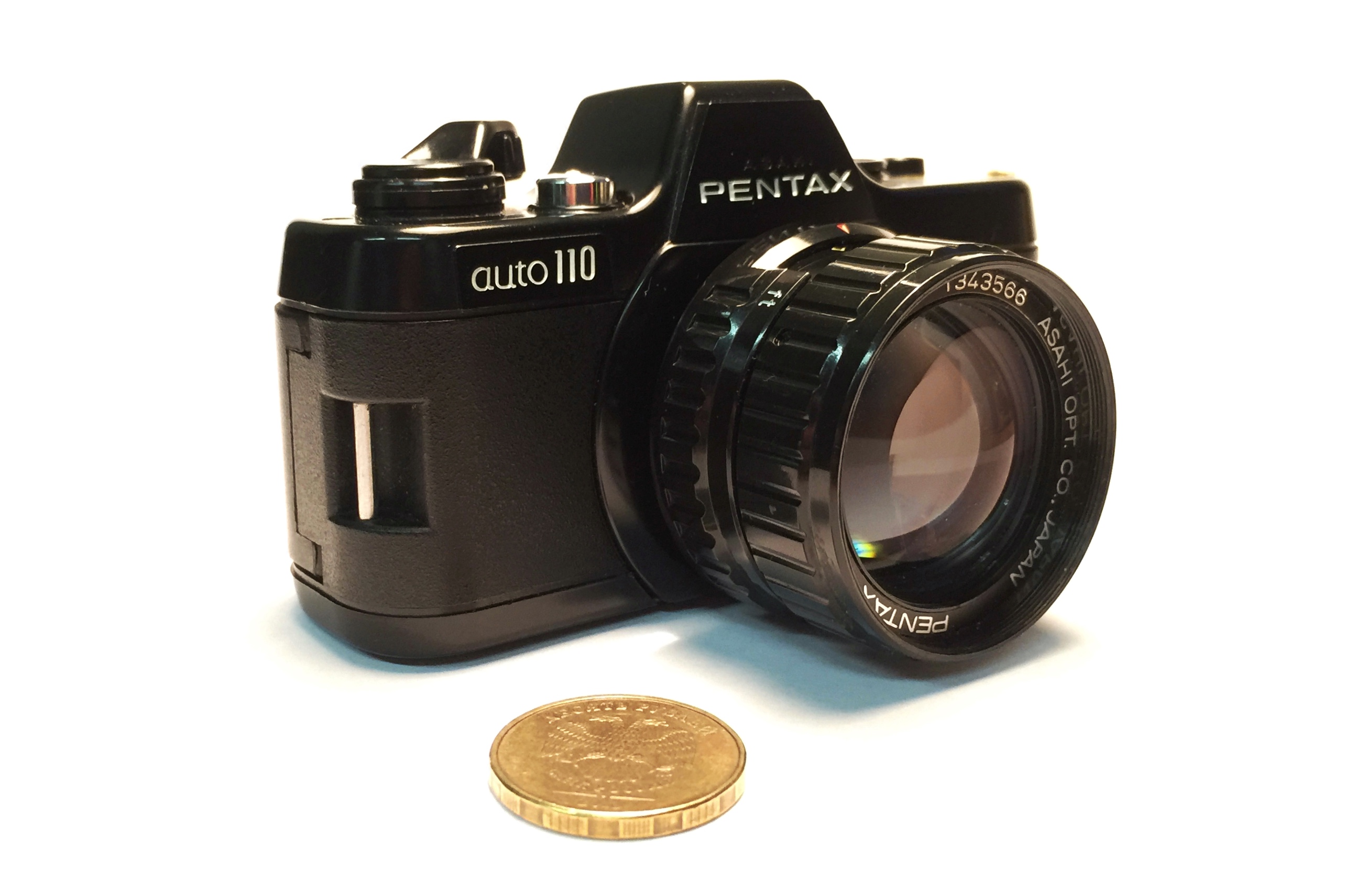
In addition, the included flash and motor drive (both accessories work on a pair of AA batteries). The flash, as expected, flashes, and the motor drive with a buzz rewinds the film and cocks the shutter, allowing for continuous shooting. By the way, during manual operation, the cocking lever must be turned twice: the first time - for rewinding, the second - for cocking. But it is not very annoying, you quickly get used to it. The camera remains miniature even being hung on the whole "periphery".

In 1981, the second version was released - Pentax Auto 110 Super. There are even more functions and technologies in it: they added a lock of the shutter, a self-timer, an exposure compensation button, and also expanded the range of exposures. Updated flash and drive. In addition, three more lenses appeared: a wide-angle 18 mm Pan Focus, a telephoto 70 mm f / 2.8, and even a zoom of 20-40 mm f / 2.8, so now there are six of them.
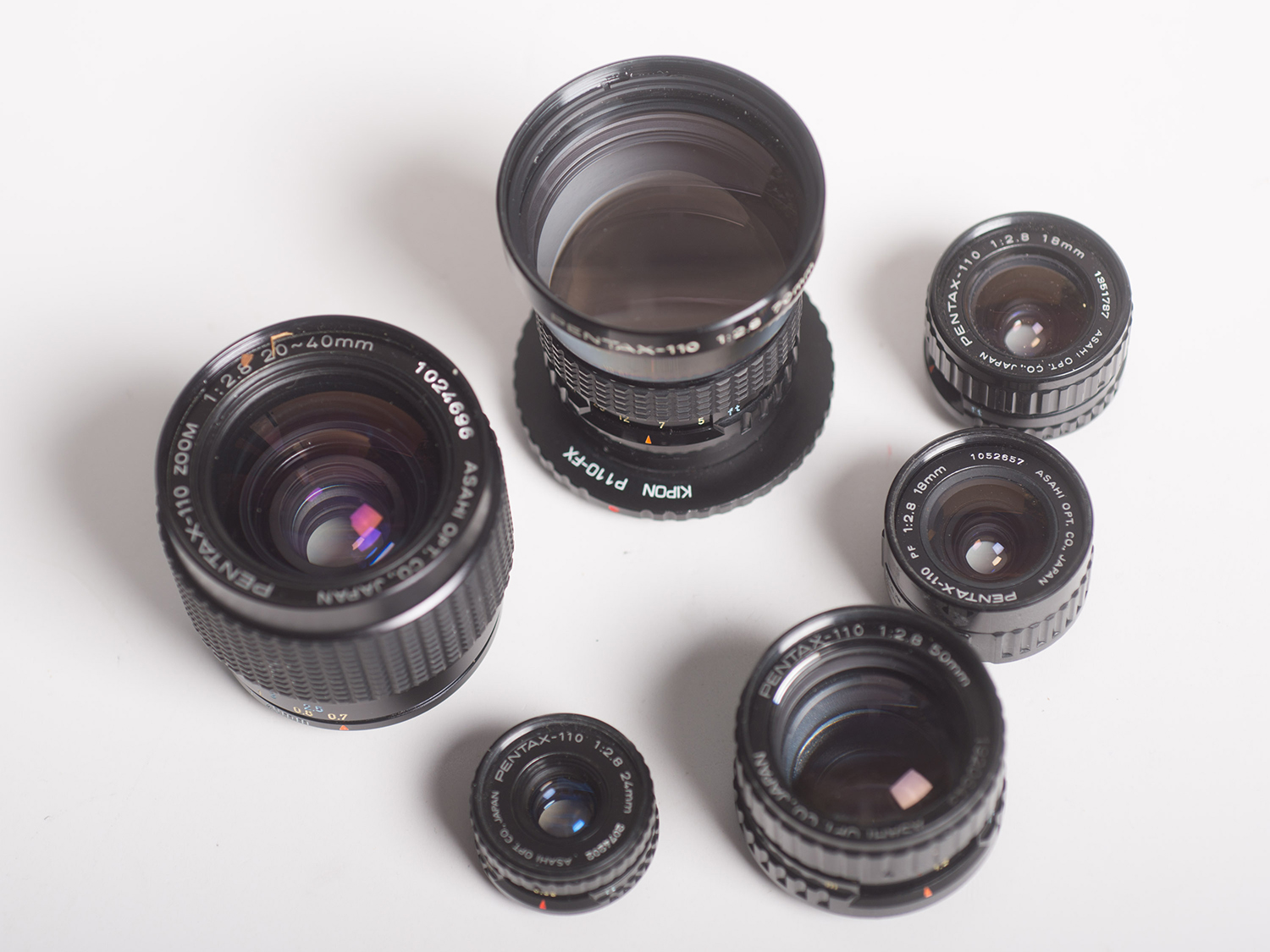
It remains to see the pictures taken by this camera. On New Year's holidays, I took Pentax to Rome, screwed a “fifty dollars” to it and gladly shot a couple of films. For my taste, the quality is quite decent, especially if you consider that Lomography is far from Kodak and Fuji, but I scanned with an Epson V550 flatbed scanner. If you manage to shove a 16 mm film into some professional scanner, I think the result will be more impressive.


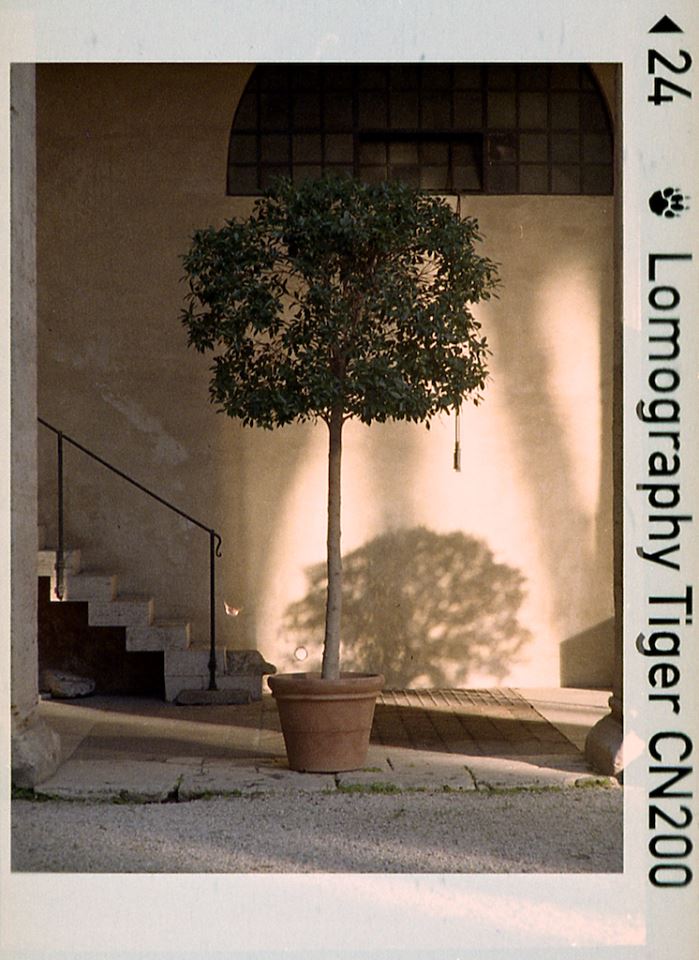


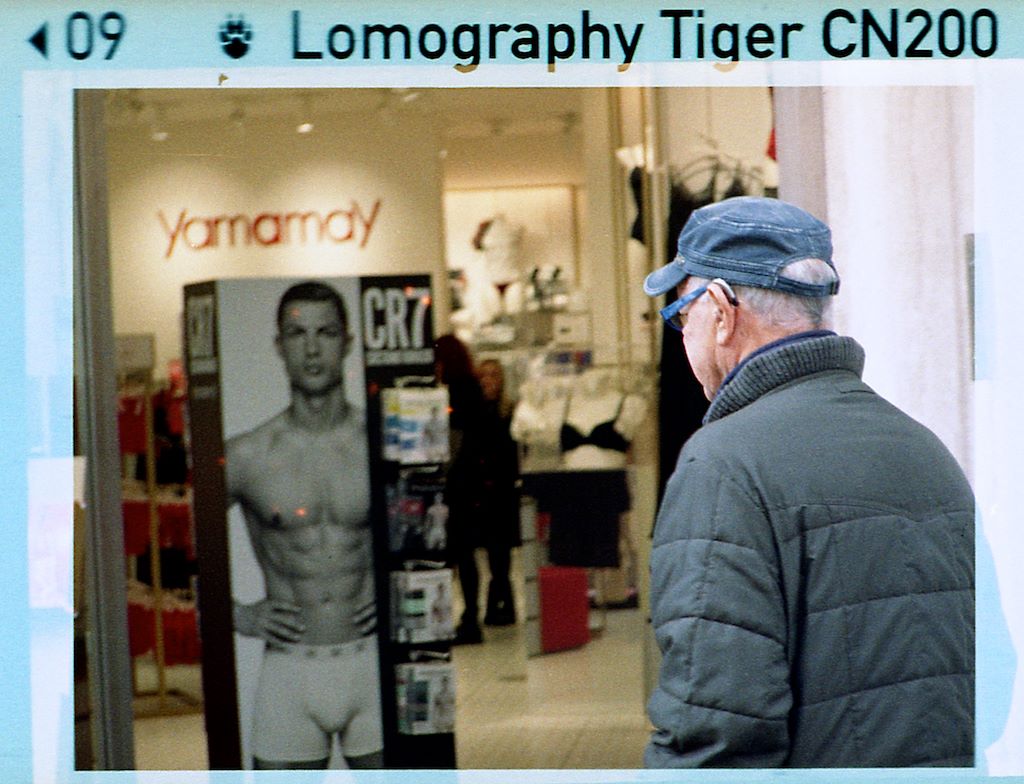
In general, I, as a lover of film photographic equipment and all miniature, are extremely pleased with the apparatuses. True, the collector's itch still does not give rest, and somewhere in the subcortex, the desire to buy a second version of the camera, as well as all versions of lenses, is actively fumbling. Fortunately, all this wealth does not take much space in the closet.
Как обычно, в процессе подбора материалов обнаружилось множество самых удивительных версий камер формата 110. Например, в виде трехглазого бинокля.
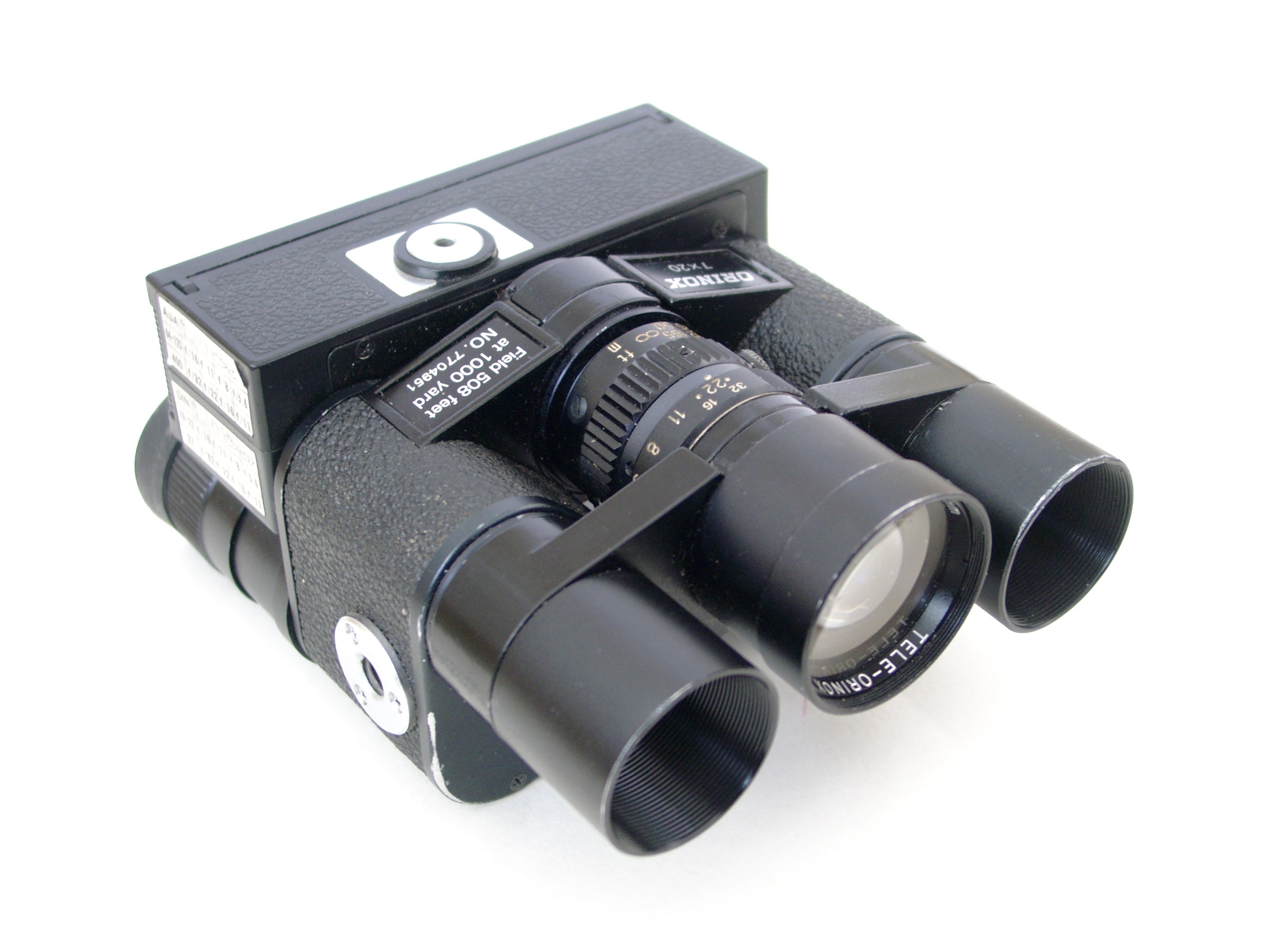
Вряд ли я его когда-нибудь куплю. Хотя…
